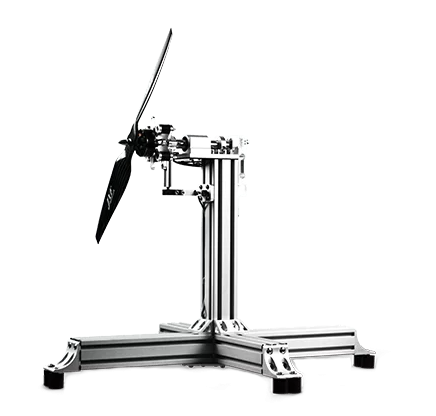What Makes Your Aircraft Lack of Cruising Time?
I wonder if you have considered whether your drone has the best efficiency and power. What makes your aircraft lack cruising time and consumes too much battery power. The problem is the motor? Or ESC? Or a propeller?
With the deterioration of the global environment, people are more inclined to use clean energy. Electricity is currently a relatively clean energy that can be used on a large scale. Like electric vehicles, pure electric drones have become a trend. The power system of an electric drone can be divided into four parts: motor, ESC, battery, and propeller. They form the heart of the electric drone and continuously deliver kinetic energy to the drone.
In the UAV's power system, the motor, ESC, and propeller work together, and any part of it will affect the efficiency of the power system. Perhaps every researcher wants to maximize their effectiveness, but which one is the shortcoming that affects the entire system?
Is the system efficiency and power efficiency low due to the motor or the propeller?
Will the efficiency be different if the same motor is replaced with a different propeller?
Will the efficiency be different if the same propeller is replaced by a different motor?
If the same propeller and motor are replaced with different batteries, will there be any difference in efficiency?
Is the factory data of the motor and propeller false, or is it blinding your eyes?
How much voltage and current can the maximum efficiency of the motor ESC system be achieved?
This is a problem that the UAV power system cannot avoid.
Many motor and propeller manufacturers will establish their own power test laboratories to test the power consumption of motors or the power efficiency of propellers, but they are silent on their efficiency (propeller efficiency refers to fixed-wing flight), which makes many drones Designers have a headache, and this really cannot be attributed to the responsibility of the manufacturer. The main reason is that the working conditions of the drone are complicated and cannot be generalized. Even if some manufacturers want to do efficiency tests, they are not referential due to the different working conditions.
A high-performance, high-precision power test bench is particularly important for UAV R&D. Lingyi Feihang has developed a technology-leading UAV power test bench in the industry, which can solve the power system test problems of UAV R&D companies.
The power system test bench is suitable for the static or dynamic tension (thrust) test of the power system of unmanned aerial vehicles and model airplanes. It can simultaneously measure the tension, power consumption and efficiency of the power system; engine power consumption and efficiency; propeller efficiency and other data. It is still a leader in the industry, meeting the various measurement needs of users and supporting personalized customization.
The test bench uses aviation-grade sensors, processing equipment and advanced algorithms to ensure accurate measurement; at the same time, vertical measurement methods are used to reduce the interference of ground effects on the measurement, and it is more convenient for users to install various sizes of power systems to multi-function installations. On the shelf, there are many humanized designs, and the test work is more convenient. At the same time, the system is equipped with fully self-developed test software, wirelessly connected to the PC terminal to intuitively monitor the test data in real time, and the test report can be generated with one key after the test, which is simple and easy to use.
Power system product features
The UAV power system test bench can be used for the power design and optimization of various types of UAVs. It is an indispensable tool for small and medium-sized UAV companies on the road of research and development. It is used in the improvement of UAV flight time and aerodynamic optimization. Has an indispensable role.
Our company also has Motor Thrust Stand on sale, welcome to contact us.


评论
发表评论